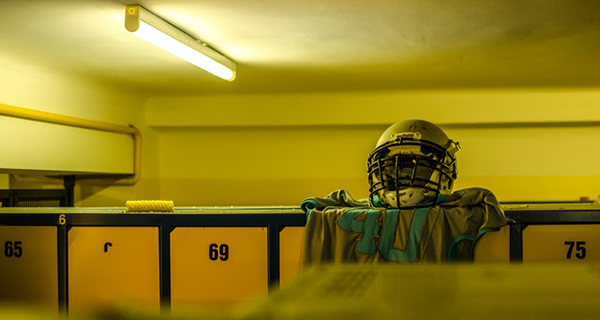 One former pro athlete recently observed that an athlete doesn’t mention three things in the dressing room: His playing time. His salary. And the first name of a teammate’s wife. He might also have added whether your favourite jock likes guys or girls when he gets home from the game that night.
One former pro athlete recently observed that an athlete doesn’t mention three things in the dressing room: His playing time. His salary. And the first name of a teammate’s wife. He might also have added whether your favourite jock likes guys or girls when he gets home from the game that night.
This prohibition has been status quo for decades, since the recently deceased Jim Bouton opened up dressing rooms in his seminal book Ball Four (1969). Despite the sexual liberation that happened elsewhere in sport – Bouton chronicles that revolution with wry humour – the liberality ends at the door marked LGBT.
The news that veteran Sportsnet broadcaster Scott MacArthur came out last weekend on YouTube would be unremarkable in almost any branch of contemporary society. But the announcement by the member of the Toronto Blue Jays radio team is big news in the cloistered world of men’s professional sports.
While other segments of the world have adjusted themselves to the notion of LGBT, you wouldn’t know it in the dressing rooms where MacArthur works – and where he will now likely face some reluctance in acknowledging the reality of an openly gay man in their inner sanctum.
MacArthur knows this, which made his coming out a serious issue in how he does his job. And a bold statement.
Major League Baseball dressing rooms – like National Hockey League, National Basketball Association and National Football League dressing rooms – are a cross-section of many cultures. Latin, black, Asian and white players work side by side. But the idea that they agree about much beyond winning is a fabrication.
Many of the men he covers come from conservative religious cultures. Others from macho cultures that abhor homosexuality. (The inability of U.S. presidential aspirant Pete Buttigieg, who is openly gay, to attract even a tiny portion of Democratic black voters is just one symptom of that cultural resistance.) Few of them will give MacArthur props for his decision – in the public sphere, at least.
MacArthur will now be judged in a different vein as he travels with the team and works in the change rooms. There isn’t much dressing-room “intimacy” anymore – players don’t shower or dress in the open, and are rarely seen naked as in the past. Women reporters forced that change.
But the motto of “what happens here, stays here” remains. And that includes who is sleeping with whom.
With so many other distractions – salary, playing time, promotional appearances – teams have discouraged any domestic dramas in rooms that threaten unity. The few that have surfaced – the Gary Leeman/Al Iafrate conflict in Toronto in the 1980s comes to mind – are strictly heterosexual. And poisonous to team unity.
Homosexual relations are still taboo. And there doesn’t appear to be any cultural or legal framework that will challenge that soon.
And that puts them at distinct odds with many prominent female athletes. As the recent World Cup triumph by the U.S. women’s soccer team showed, women’s sports are very liberated compared to the conservative standards of men’s sports. Led by the ubiquitous Megan Rapinoe, women are open about their homosexuality. They flaunt it. You can’t swing a cat without hitting a lesbian in a women’s sport.
There are couples on the same team and married couples on opposing squads. Canadian hockey star Gillian Apps recently married rival American player Meghan Duggan. While the subject of intramural liaisons is taboo in men’s sport, the drama in women’s open dressing rooms is a real thing. It can be manifested in any manner of bondings – straight on straight, lesbian on lesbian, bi with any of the above.
Who wouldn’t be enthralled to hear from modern coaches on the balancing acts they perform amidst jealousies, fights and distractions brought on by the recognition of romance between the players? How do they keep team unity in the face of a public split between line mates or defence partners?
But amidst the media’s sexual liberation theology on everything else, there’s a distinct lack of coverage on how unique team building is in women’s sports.
Why?
As the soccer players showed, the athletes are quite willing to discuss it. Some want to shout it to the rooftops.
Or is it that a media that acts so brave in blaming ‘the patriarchy’ for everything else that goes wrong is reluctant to report anything that might make LGBT women look unfavourable or emotional?
For now we can only be glad that MacArthur has found his “truth.” We can hope that it doesn’t affect the way he’s treated by the people he covers. And we can hope that men’s dressing rooms open up to receive the reality of the 21st century.
Troy Media columnist Bruce Dowbiggin career includes successful stints in television, radio and print. A two-time winner of the Gemini Award as Canada’s top television sports broadcaster, he is also the publisher of Not The Public Broadcaster.
The views, opinions and positions expressed by columnists and contributors are the author’s alone. They do not inherently or expressly reflect the views, opinions and/or positions of our publication.

